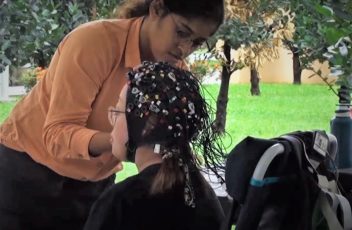Brain scans outdoors: how to collect reliable EEG and FNIRS data in-situ?
Rigorous neuroscience research would question collecting the neuroscience data outdoors, due to too many confounding factors occurring and researchers not being able to control them all. In the sensory exposure research, each participant has to be exposed to the same set of stimuli, which is very difficult if not impossible in an outdoor setting. For example, small environmental nuances such as certain type of cloud covering the sun would change the amount of light reaching the eye of the participant , which can dramatically change the alpha power produced by the brain.
For this sake we should collect the exposure data in a controlled-lab environment, controlling for each factor such as brightness, temperature, etc. Also, we should use the same set of stimuli, that can be recorded in a form of photo, video or more immersive - VR.
However, environmental researchers, landscape architects and ecologists will all agree that the exposure to nature in the lab has nothing to do with the one outdoors in a real setting. Lab-based experiment lacks the so-called "ecological validity" - meaning it cannot be fully compared with the real experience. As it is essential to advance the knowledge in the area of real exposure to nature as opposed to natural images, we took a challenge to collect a reliable data outdoors, while controlling for most important environmental factors (temperature, humidity, brightness and noise), and making sure for each participant the experience is as similar as possible.
We recorded the video of in-situ data collection from the "Effects of Landscapes on the Brain" project in Singapore, where we show how the EEG and fNIRS data can be collected outside. We have published the preliminary findings from that research in a journal.
Let us know if you have comments or questions about that procedure, also share and support pushing this discipline forward!
President and Founder of NeuroLandscape. Ph.D. in Landscape Architecture and Urban Ecology, in her research she explores the relationship between the different features of the natural and built environment’s influence on human health and well-being. She has successfully incorporated neuroscience tools to investigate the changes in brainwave oscillation in people exposed to different types of scenery. She has introduced and operationalized the term contemplative landscape and proposed a quantitative assessment scale – a Contemplative Landscapes Model (CLM) – to identify most beneficial landscapes for mental health in terms of passive exposure. She is an author of “Neuroscience for Designing Green Spaces: Contemplative Landscapes”, Editor-in-Chief of the Journal of Urban Design and Mental Health. She is continuing her research on therapeutic landscapes under two ongoing Horizon Europe projects: GreenME and GreenInCities.


